For a garden water feature, most people make do with a fish pond. The well-to-do might run to a decorative fountain. Not Victoria Harrison. Rolling in and out beneath the floor of her dining room in medieval Itchen Stoke mill, she has almost a mile of one of England’s clearest, purest and – especially in the heat of last week – coolest streams.
“This is so wonderful, we hate to keep it to ourselves,” she says as we cross the rickety wooden bridge across her stream and onto the meadows. We gaze down at wild trout and grayling loitering among dark mats of Ranunculus weeds, looking for mayflies hatching among the gravel beds in the shallow stream. Dragonflies hover above. “We love to share all this. We had six school groups here last term.”
The river is the Itchen, which rises nearby in a shady roadside pond amid the downland of Hampshire north of Winchester, the ancient capital of Wessex. The river is probably the best example of one of the most remarkable - yet least remarked - features of the English countryside: chalk streams. Nobody does this better.
Geographers say there are only 210 true chalk streams anywhere in the world, and 160 of them are in England. You can find them draining chalk hills from the River Hull in Yorkshire, through the Chilterns and North and South Downs to the Piddle in Dorset. The Hampshire Itchen, the nearby Test, the Lambourn in Berkshire, the Wensum in Norfolk, the Darent in Kent, the Frome in Somerset and many more are, ecologically, England’s rainforests. They are our unique contribution to global ecology.

Chalk streams are England's unique contribution to global ecology
Bubbling up out of thousands of springs, chalk streams collect first in ponds and then ripple over gravel beds through chalk hills towards the sea. They are typically wide, shallow and crystal clear, their alkaline waters pure thanks to the constant purifying and filtering in the chalk.
They are an irreplaceable relic of our past, created as the ice sheets retreated from England 10,000 years ago. The gushing flows from melting ice brought huge quantities of the distinctive gravels that still occupy their beds and determine their ecology. “Never since have these rivers had sufficient energy to significantly alter their location, shape or size,” says Southampton University geographer Trevor Bond.
Chalk streams are centre stage in many of our best-loved images of perfect England. The Kennett, a major tributary of the River Thames in Wiltshire, flows past Wiltshire’s Silbury Hill, a man-made mound as old as the Egyptian pyramids, and on to Avebury’s stone circle.
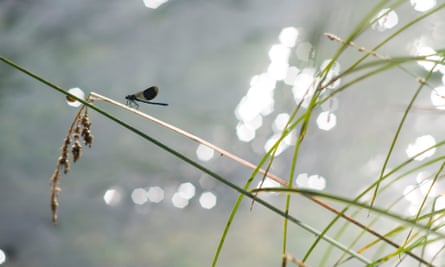
Painter John Constable famously portrayed the Hampshire Avon and its water meadows in front of Salisbury cathedral. Kenneth Grahame’s Wind in the Willows was set on a chalk stream. Poet Sir John Betjeman wrote of the Kennett: “When trout waved lazy in the clear chalk streams, Glory was in me ...”
Fishermen love chalk streams, especially fly fishermen. Fly fishing to catch trout was invented on the Itchen, centuries ago. Ecologists also love chalk streams. Rare species abound along these waters, including the southern damselfly, one of Europe’s most endangered insects, otters, kingfishers, the white-clawed crayfish and plants like the river-water crowfoot.
As we walk Victoria’s meadow, a heron takes off from the rushes. Hereabouts too are lapwings, redshanks, barn owls and snipe. Back on the river, her black Labrador rapidly retreats from the water when a swan stops off from nibbling the weeds to hiss at it. A pair of otters now live here, after recently being reintroduced. But, just in the past three years, Victoria reports that water voles, which were once frequent, have disappeared.
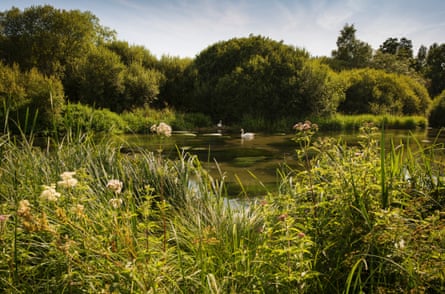
The water meadows of chalk streams don’t just serve ecology. During last winter’s torrential rains, when they were putting up sandbags to protect homes in central Winchester from the Itchen’s rising waters, capturing water on upstream meadows such as Victoria’s helped slow the flow and reduce the flood peaks.
You would think we would long since have decided to take proper care of these treasures. But no, says Rose O’Neill, freshwater campaigner for WWF. Threats come from farmers and the demands of water companies and their customers – that is to say, us. And existing laws don’t work well in many places – something she blames on the main enforcement agency, the Environment Agency, which is increasingly hamstrung by political pressure to put jobs and cheap water charges first.
However, there is a growing movement to protect this half-forgotten heritage. NGOs such as WWF, along with anglers groups, last year formed the Chalk Stream Charter. It is demanding full legal protection for all chalk streams, says O’Neill.
The Itchen has, in theory, copper-bottomed protection. It is listed under the EC’s habitats directive as a special area of conservation, as well as being a site of special scientific interest. Yet, only a couple of miles upstream of Victoria’s 18th-century mill, the waters of the Itchen are diverted for some of the country’s largest watercress farms, which together abstract almost 100m litres of water a day.
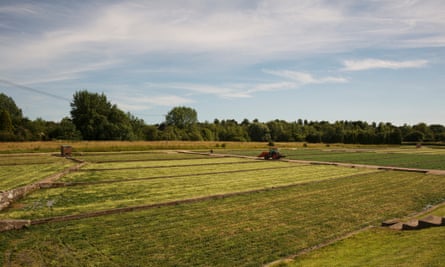
On the face of it, that’s fine. Watercress grows wild in the local chalk streams, and the farmed beds look rather like industrialised versions of chalk streams, with their shallow pools lined with gravel and constantly irrigated with sparkling river water. Its job done, most of the water then runs back into the river.
The trouble is that the beds are fertilised with nitrogen and phosphorus that change the streams chemistry and encourage the growth of blooms of algae. Worse, Harrison says as she leads us on a journey to find the evidence, the watercress companies have grown so big that they now bring salad vegetables from all over Europe to wash in the stream waters prior to packing. “These huge trucks come here, driving through our lanes, to wash foreign salad in water from our stream,” she says.
This hasn’t killed the river by any means. It is still “as clear as gin”, as they say in these parts. But it isn’t as pure as it might be. The fertilisers are changing the river.
A threat that looms even larger, and that is shared by most of England’s chalk streams, is water abstraction. The streams are fed by springs that release water stored and purified in the chalk hills. Those hills are immense water stores – bigger than any manmade reservoir. That should mean the springs are unceasing and the rivers flows constant, even in the driest summer. Traditionally, chalk streams have been much less variable than others that rely on the rains.
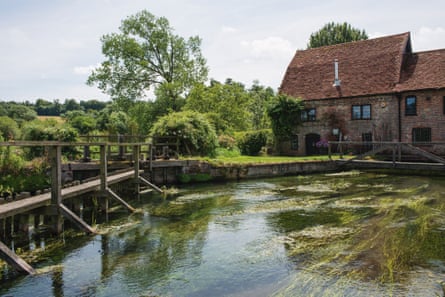
But with densely populated southeast England pumping two-thirds of its water from underground, usually from chalk, the water tables in the hills are falling. When the level sinks below the points where the springs emerge, the chalk streams dry up, killing their unique ecosystems.
The government has 37 chalk streams on its endangered list
We are turning off nature’s tap. The Environment Agency has 37 chalk streams on its endangered list because of over-abstraction, almost a quarter of the total. Many are shadows of their former selves.
The Chiltern Hills, whose springs supply the Mimram and Bean in Hertfordshire, both tributaries of the River Lea, are heavily overpumped, and the upper reaches of these two precious rivers regularly dry up in summer. The Mimram dried up for most of its length during the dry summer of 2005. Some life returns when the flows resume, but fish stocks have not recovered, and nor have otters.
The Mimram once had water mills its entire length and a century ago still rivalled the Itchen for wildlife. But expanding nearby new towns like Stevenage and Welwyn Garden City are sucking it dry.
This summer, most chalk streams are still flowing well, because last winter’s record rains topped up the underground water reserves. But a couple of dry winters would change that. As a recent WWF report on Britain’s waterways, Rivers on the Edge, put it: “When once our small chalk streams would have survived a drought, today the same conditions can finish them off.” In the past, when there were lower rates of abstraction, the water tables would have remained high enough during the drought for the springs to persist and the water to keep flowing. But now, if the winter level starts lower, due to greater abstraction and climate change, then the risk of it drying out in a dry summer is increased. As with the Mimram, the flow will probably resume when the drought ends. But, as with the Mimram, the long-term effects on wildlife - the fish, and fish eating predators like otters - are not easily reversed.
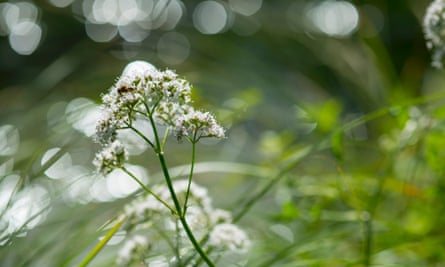
Further downstream from Victoria, the local water company, Southern Water, takes water direct from the Itchen at Otterbourne. More than 300,000 homes in Winchester, Southampton and around get their tap water from the river. Otterbourne is where human demands and the needs of the river come into sharp conflict. And the river is losing.
A decade ago, in its first detailed review of England’s chalk streams, the Environment Agency concluded that Hampshire sometimes took too much water out of the Itchen. Below a flow of 237m litres a day in the lower river (the normal river flow is considerably higher, but this is the kind of level they get down to in dry summers) mayflies and shrimps rapidly disappeared, with knock-on effects through the river’s food chain.
Such low flows will probably happen with increasing frequency as climate change gathers pace. Nobody knows for sure, but it is likely to make summer droughts longer and hotter, with chalk streams running dry more often and over much greater lengths, leaving fish stranded.
The EA told Southern Water to reduce abstractions by putting in a pipe linking the nearby River Test, another chalk stream that is used less, to the Itchen water treatment works at Otterbourne. But the plan has not gone ahead, says O'Neill. Some EA scientists, she says, have concluded that it could damage the Test. There should be a better way to save the Itchen. But what?
One option, done in many other places, is to replace direct river abstractions with pumping water direct from the hills. But since the hills are ultimately the source of the water in the rivers, the effect is no more than to camouflage the continued plundering of nature’s most vital resource.
And meanwhile, the deadline for “saving” the lower Itchen, originally set at 2015, is slipping by.
Is there a chalk stream near you? Let us know your thoughts below.
Interested in finding out more about how you can live better? Take a look at this month's Live Better challenge here.
The Live Better Challenge is funded by Unilever; its focus is sustainable living. All content is editorially independent except for pieces labelled advertisement feature. Find out more here.
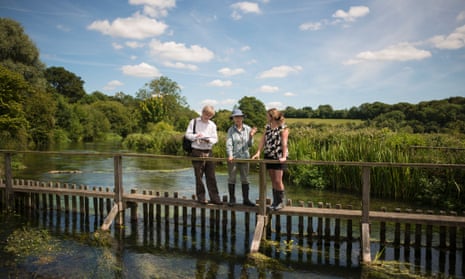





Comments (…)
Sign in or create your Guardian account to join the discussion